The glycemic index of bread depends on the types of grains and refined sugars used during the baking process.
Care should be taken to select breads with a low GI value, which includes a number of popular sourdough and rye breads.
Certain types of bread, particularly those with larger, coarser grains, our sourdough breads whose acidity counteracts the rapid release of glucose, are excellent choices.
Take care when choosing regular grocery store breads however. Most of these are heavily refined and ‘enriched’. Look for coarse grains, seeds, and heavier blends!
The glycemic index (GI) is a measure of how quickly a carbohydrate-containing food raises blood sugar levels. Generally, bread made from refined white flour has a higher GI compared to bread made from whole grains. Here are some common types of bread and their GI scores:
- White bread – high GI score (70 or above)
- Whole wheat bread – medium GI score (56-69)
- Sourdough bread – lower GI score (50-69)
- Rye bread – lower GI score (40-59)
- Pumpernickel bread – lower GI score (41-46)
It’s important to note that the GI score is just one factor to consider when making food choices, and that other factors such as the amount and type of carbohydrate, fiber content, and overall nutritional value should also be taken into account.
Glycemic Index of Wheat Bread, White Bread, Sourdough |
Type of Bread | Glycemic Index Score |
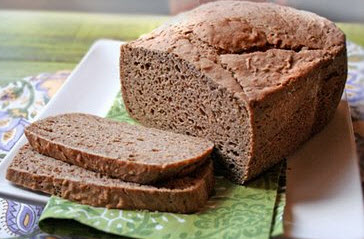 |
Dark Rye | 51 |
 |
French Baguette | 95 |
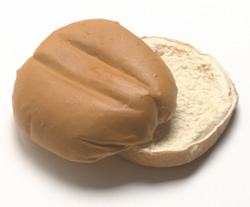 |
Hamburger Bun | 61 |
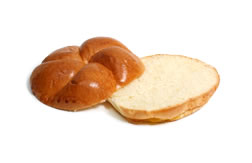 |
Kaiser Roll | 73 |
 |
Pita Bread – Whole Wheat | 57 |
 |
Sourdough | 52 |
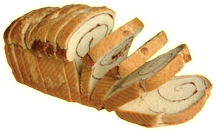 |
Fruit Bread | 53 |
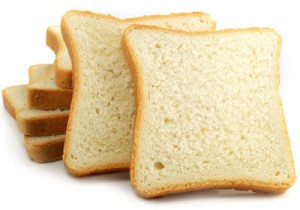 |
White Bread | 70 |
 |
Wonder Bread, White | 71 |
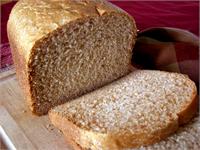 |
Wheat Stoneground Bread | 53 |
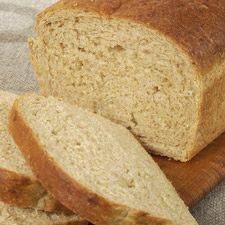 |
Whole Wheat | 69 |
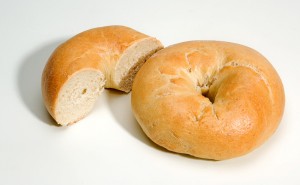 |
Bagel, plain, white | 72 |
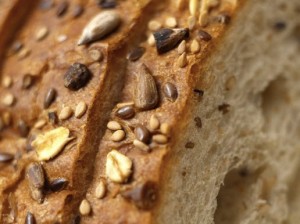 |
Wholegrain Bread | 40 |
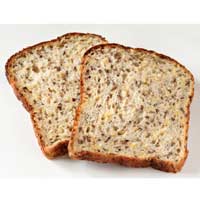 |
Multigrain Breads | 45 |
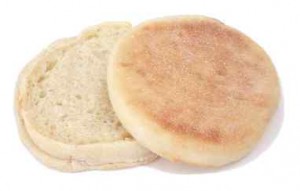 |
English Muffin, Whole Grain | 45 |
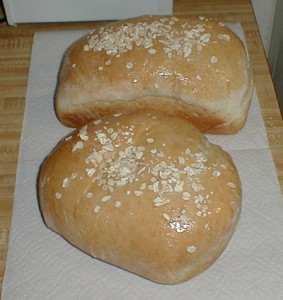 |
Oat Bread | 65 |
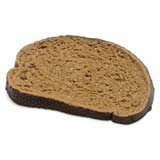 |
Rye Bread | 50 |
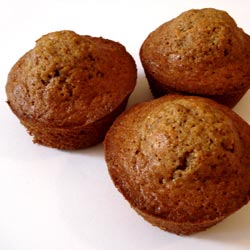 |
Bran Muffin | 65 |

No, it’s not work this way, it means your product will have 71 glycemic index, but you will reduce glycemic load by half.
What happened to SPROUTED breads?!
Hi,
My name is Sandra
I have a question to ask if I may, thank you,
If I mix unbleached white (wheat) all purpose flour 71 glycemic index and almond flour 0 glycemic index, will the mixing of this two with equal parts reduce the glycemic index by half of the 71 glycemic index of the unbleached all purpose flour.
The other question is if I use a flour using the same equal parts mixture as the previous question but this flour has a glycemic index of 50 will the total glycemic index be 60.5.
For each mixture I divided the glycemic index in half of each flour because I used equal parts of each flour.
I’m just using this mixture percentage as a way to understand the lowering of the glycemic index using lower or zero glycemic flours. Hope I haven’t confused you, I didn’t really know how to ask the question professionally or correctly I hope you can answer my question
Thanks
You will reduce glycemic load by half, but index will remain as high as 71
sourdough jewish rye, george greenstein, secrets of jewish baker, use 3 cups sourdough and 4 cups ap flour, sourdough is 50/50 dark rye/ap flour, (use king arthur), i’ve been a diabetic for 46 years, eating this bread is like not eating bread, I mean i would not eat this for a low blood sugar situation, bread keeps easy for a week or longer even with out potato water, sourdough has been used for at least 5000 years, baker yeast bread only 150 years.
okay I found out what AP flour is now thanks you have answered a part of my question.